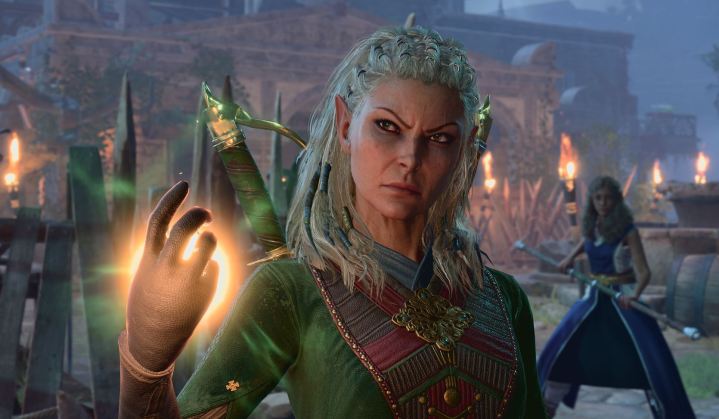Baldur’s Gate 3 did it. The highly anticipated follow-up to BioWare’s legendary CRPG series lived up to all the expectations fans of the originals garnered over the course of 23 odd years and is appealing to tons of new players as well. It has an average score of 95 at Metacritic and SteamDB currently shows an all-time peak of over 814,666 concurrent players — making it one of the most widely played games ever on the platform. I’m thoroughly enjoying playing through the campaign at a leisurely pace with my Half-Orc Wild Magic Barbarian. At roughly 45 hours in, I can confidently say Baldur’s Gate 3 offers the most immersive RPG experience in recent memory.
It ties the flexible interactivity and dynamic combat of games like Divinity: Original Sin 2 with the cinematic presentation of a Dragon Age or a Mass Effect — all while maintaining the breadth of customization options and story richness of the originals. But more importantly, it does a dang good job of simulating fifth-edition Dungeons & Dragons rules. It’s outstanding … until you die.

Death is a totally normal part of Dungeons & Dragons and other video game RPGs. But in one particular way, Baldur’s Gate 3 twists its blade extra hard: the haphazard nature of its autosaving. It’s not like autosaves are totally vacant in Baldur’s Gate 3; you can toggle the option on and off in the game’s Settings menu. Even if you do that, though, they happen at such awkward intervals, like during a long rest, that it feels like you can play through an entire quest arc without ever seeing one.
I’ve already lost hours to untimely deaths, bad rolls, or even the occasional crash — only to find out all the spelunking and questing was totally forgotten by Baldur’s Gate 3 because I forgot to manually save. The most egregious example of a lack of autosave placement was around the Blighted Village area, which I needed to complete three separate times. The first time, I did everything, went into the Whispering Depths, then crashed while fighting the spiders. The second time, I did everything, including clearing out the spiders, resurfaced, and then got myself killed by a pack of gnolls. The third time, I remembered to save.
Thankfully, I learned my lesson, but no sooner than another close shave with real-life RNG. After wrapping up the main story quest at the Goblin Camp, I spent a solid hour hanging out in the Emerald Grove, exploring bits of the surrounding areas, and running off to kick some monster butt in the Underdark, only to realize my most recent previous save would’ve returned me to the midst of the Goblin Camp quest. Thankfully, I finally remembered to save manually before a particularly dicey-looking dice roll.
The aforementioned checkbox option in the settings menu taunts me with its description, goading me to “enable automatic saves after every long rest and when reaching important points in the game.” In practice, though, autosaves don’t activate nearly often enough, and putting the pressure on players to make compulsive trips to the pause menu to quicksave often are prohibitive in an otherwise seamless experience.
Larian, I beg you: At least give us the option to toggle autosaves after short rests! I’m glad there’s some form of autosave system, but relying on its current implementation in Baldur’s Gate 3 is like taking advice from a Magic 8 ball. It’s downright archaic how few and far between autosaves are placed on the map. Somehow, the original Baldur’s Gate from 1998 manages to be less punishing because it autosaves when you switch between overworld zones. In Baldur’s Gate 3, teleporting between waypoints offers no such safety net.
Granted, you can always quicksave, but it’d be much more helpful to include autosaves after combat encounters, dialogues with party members that include rolls, or simply after a certain amount of time. Alas, this is ultimately a small critique of an RPG that’s already shaping up to be one of the best games in a stacked year of releases, but a better autosave system would make my experience with the game even better. Plus, it might just help Digital Trends’ Baldur’s Gate 3 reviewer get their review out a little faster.



